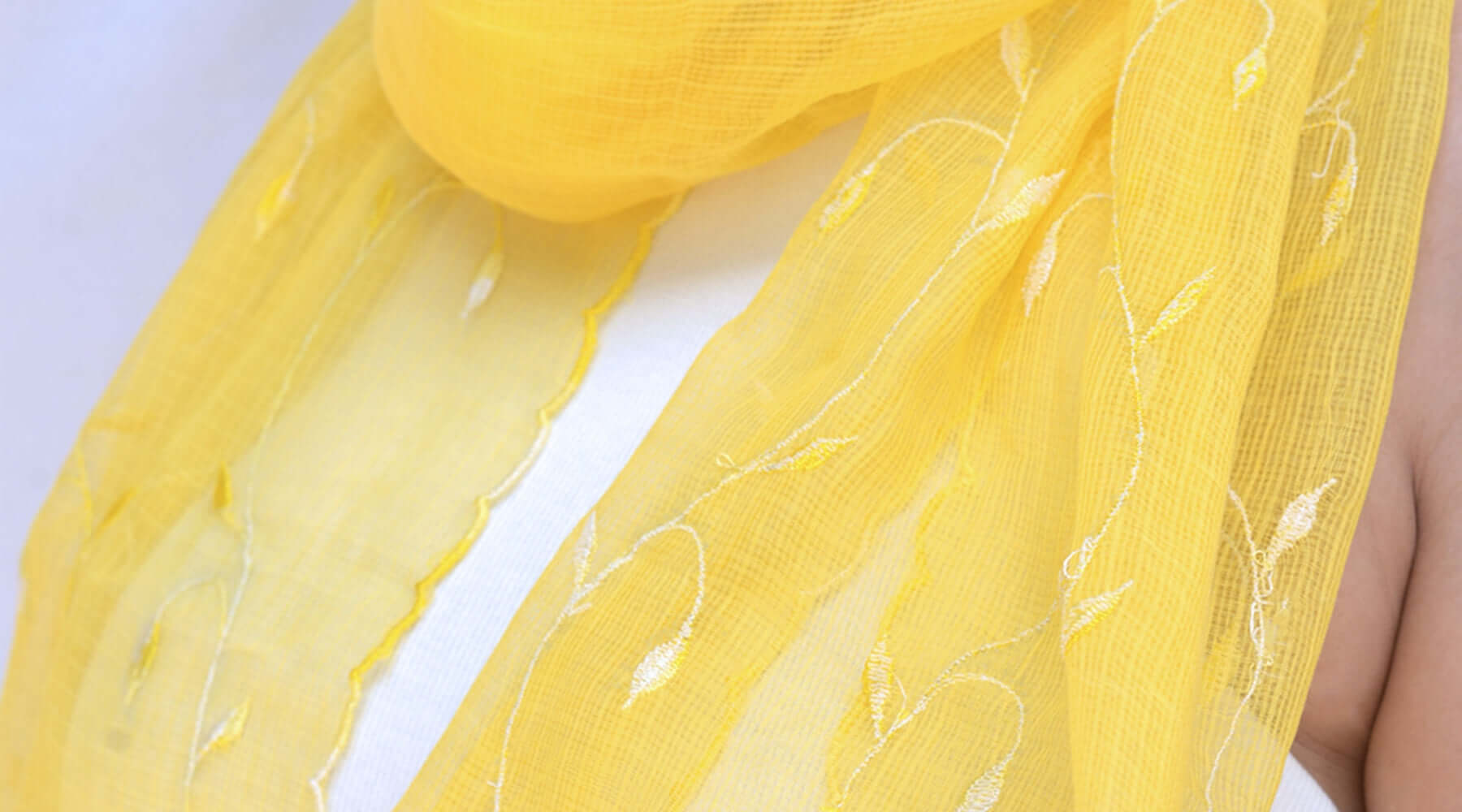Cotton Kota Doria is a traditional Indian fabric that comes from the town of Kota in Rajasthan. The name "Kota Doria" reflects its origin and the weaving technique used to create it. "Doria" means thread, and this fabric is known for its unique weaving style that combines cotton and silk threads to produce a lightweight, airy texture. The result is a sheer fabric that feels soft and comfortable, making it ideal for hot weather.
Origins of Kota Doria
Kota Doria has a rich history. It was originally woven in the town of Mysore in Karnataka, but the craft later shifted to Kota. It is believed that during the 17th and 18th centuries, the Mughal rulers of India brought weavers from Mysore to Kota to teach the local artisans the art of weaving this fine fabric. Over time, the people of Kota mastered the technique and developed their own distinct style.
Today, Kota Doria is a symbol of Rajasthani craftsmanship and is often worn in the form of sarees, dupattas, and stoles. It is highly regarded for its transparency, lightness, and sheer quality, which make it a favorite during the summer months.
Characteristics of Kota Doria
The most distinctive feature of Kota Doria fabric is its unique checkered pattern, known as "khats." These checks are created by weaving a combination of silk and cotton yarns in a particular pattern. The cotton adds strength and durability to the fabric, while the silk adds shine and smoothness.
The fabric is extremely lightweight, almost as light as air. Despite its delicate appearance, Kota Doria is quite strong and can last for years if properly cared for. Its sheer, semi-transparent texture is one of its most notable characteristics, giving it an elegant and airy look. When used in sarees, this semi-sheer appearance adds a touch of sophistication, making it a popular choice for both casual and formal occasions.
The Weaving Process
Kota Doria is handwoven on traditional pit looms by skilled artisans. The weaving process is intricate and requires a high level of skill. The threads are carefully placed in a way that creates the small square patterns or checks. Artisans use a combination of cotton and silk threads, which are dyed in vibrant colors to give the fabric its rich appearance.
It can take several days or even weeks to complete a single piece of Kota Doria fabric, depending on its size and complexity. Each piece is unique, reflecting the craftsmanship and creativity of the weaver.
Uses of Kota Doria
Kota Doria is most commonly used in sarees, which are loved for their lightness and graceful fall. Women prefer these sarees during the summer as they allow air to pass through, keeping the body cool. The fabric is also used to make dupattas, scarves, stoles, and sometimes even lightweight garments like kurtas. Its sheer quality gives these garments a light, elegant, and breathable feel.
In recent years, designers have also experimented with Kota Doria to create more modern, fashionable outfits like dresses and skirts, showing how versatile this fabric can be.
Conclusion
Cotton Kota Doria is a beautiful and versatile fabric that blends tradition with practicality. Its lightness, strength, sheer texture, and elegant appearance make it a perfect choice for summer wear. Whether in the form of a saree, a dupatta, or a scarf, Kota Doria adds a touch of timeless elegance to any outfit. This fabric not only represents the rich cultural heritage of Rajasthan but also showcases the incredible craftsmanship of the weavers who continue to preserve this ancient art.
References
Wikipedia contributors. (n.d.). Kota Doria. Wikipedia. https://en.wikipedia.org/wiki/Kota_Doria
Kessa. (n.d.). The story of Kota Doria: The gossamer from India. https://www.kessa.com/the-story-of-kota-doria-the-gossamer-from-india/
House of Chikankari. (n.d.). Kota Doria: A unique craft that originated from Kota. https://www.houseofchikankari.in/blogs/blogs/kota-doria-a-unique-craft-that-originated-from-kota





